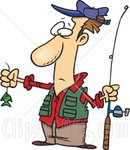The Steps In Goldfish Care
The most important piece of equipment in your fish tank is the filtration system. There are several different types of filtration system. A type of filter that you will frequently encounter is a box that fits over the side of the tank. The water circulates through the filtration system, which usually uses charcoal or a similar filter media to filter out the impurities in the water. Another type of filtration system is a biological filter. Biological filtration can be used in conjunction with a charcoal filtration system, and permits good bacteria to grow in the tank which helps to keep the tank clean.
The number of fish you have in your aquarium can impact on the water quality, especially if you have too many fish in a tank that is too small. It is important to ensure that you have the correct goldfish population for the size of tank you own. Do not overcrowd your fish. After overcrowding, the next most likely cause of problems with your goldfish is overfeeding. Fish should only be fed an amount they can eat within a few minutes. If you feed your goldfish too much, the uneaten food will fall to the bottom of the tank and turn into sludge which will not provide a healthy environment for your fish to live in. Uneaten food can also lead to algal growth.
Partial Water Changes
You will need to perform partial water changes every two weeks or so as a central part of your goldfish care. This keeps the algae level down and helps to maintain a healthy environment for your goldfish. Typically, siphoning off about 20 percent of the water is adequate. Replace with fresh water. If your tap water contains chlorine it is imperative that you add a chlorine neutralizer when adding fresh water to your fish tank.
Observe Your Fish Daily
Observe your goldfish on a daily basis. Ensure that all your equipment is running properly. Always make sure your filter is running as it can sometimes lose its prime if there is a power outage. Make sure your air pump is working properly, too, to ensure your goldfish have plenty of oxygen. Goldfish don't need a heater but if you have tropical fish they will require a heater to maintain the water temperature.
Just keeping an eye on your fish on a daily basis and observing their behavior can help with your goldfish care and tank maintenance. If you notice any behavioral problems with your fish, take a proactive approach to determine what is wrong with them and treat the symptoms immediately. Sick fish should be put into a quarantine tank if possible while being treated.
Maintaining a clean aquarium and a healthy living environment are not difficult tasks in goldfish care, and a little preventive fish tank maintenance on a regular basis will keep your fish healthy and disease free.
By Alison Stevens
Alison Stevens is an online author and maintains The Goldfish Site and The Goldfish Blog to assist anyone who wants to get started with setting up an aquarium fish tank and keeping goldfish. Article Source: http://www.isnare.com/?aid=218589&ca=Pets
